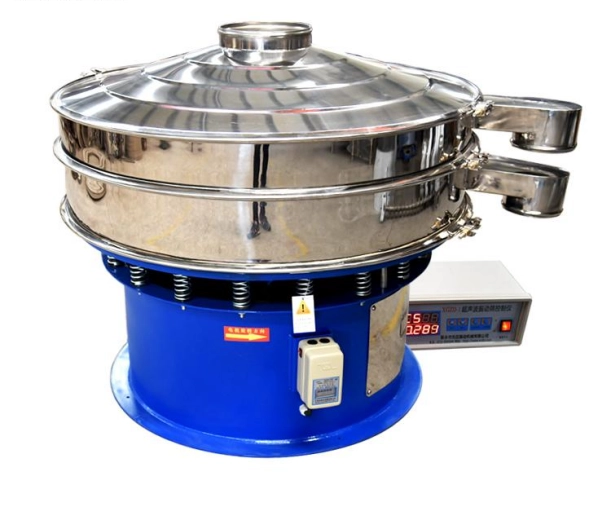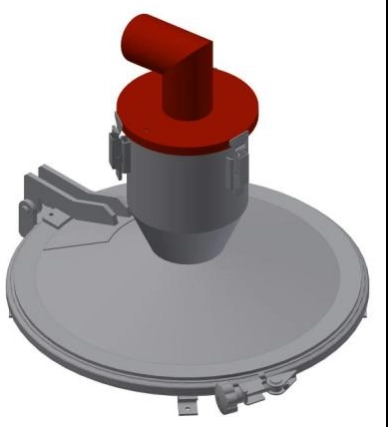Content Menu
● Understanding Powder Sieving Systems
● Key Features of an Effective Powder Sieve System
>> 1. High Sieving Efficiency and Throughput
>> 2. Adaptability to Different Powder Types and Sizes
>> 3. Safe and Non-Destructive Powder Handling
>> 4. Ultrasonic Technology for Improved Sieving Performance
>> 5. User-Friendly Interface and Operation Control
>> 6. Effective Powder Collection and Minimal Waste
>> 7. Robust Build Quality and Material Compatibility
>> 8. Compact Size and Mobility
>> 9. Advanced Cleaning and Maintenance Features
● Types of Powder Sieving Technologies
>> Mechanical Vibratory Sieves
>> Air Jet Sieving
>> Ultrasonic Sieves
>> Bi-Directional Airflow Sieving
● Applications Across Industries
● Maintenance and Operational Tips
● Related Questions and Answers
Powder sieving systems play a crucial role in various industries where powder materials are processed, including pharmaceuticals, metallurgy, food production, and additive manufacturing. Selecting the right powder sieve system is essential for ensuring product quality, operational efficiency, and safety. This comprehensive article outlines the top features to consider when choosing a powder sieve system, guiding users to make an informed decision that aligns with their specific requirements.

Understanding Powder Sieving Systems
Powder sieve systems are designed to separate powders by particle size, remove impurities or oversized particles, and ensure uniformity in the final product. They use mesh screens, filters, or air flow techniques to perform this separation efficiently. The right system enhances product quality, reduces waste, and improves processing speed.
Key Features of an Effective Powder Sieve System
1. High Sieving Efficiency and Throughput
Efficiency is paramount. A high-performance powder sieve system must consistently process large volumes with minimal downtime. Features that contribute to efficiency include:
- Automated Operation: Systems with one-click or intelligent controls simplify workflow, allowing operators to run the sieving process with minimal manual intervention.
- Continuous or Batch Processing Flexibility: Adaptability to both mass production and small-batch trial runs increases versatility.
- Rapid Sieving Mechanism: Designs that prevent clogging and enable smooth powder flow through screens maintain fast processing speeds.
For example, some advanced systems integrate gas purging, ultrasonic vibration, and automated particle collection to enhance throughput and avoid powder scattering.
2. Adaptability to Different Powder Types and Sizes
Powder materials vary widely in particle size, shape, density, and reactivity. A good sieve system should offer:
- Multiple Sieve Sizes and Mesh Options: This flexibility accommodates ultrafine powders as well as coarser materials.
- Compatibility with Various Production Volumes: Systems capable of handling both lightweight reactive powders and heavy-duty industrial powders serve broader needs.
- Customization: Some sieves allow adjustment of vibration intensity, airflow rates, and other parameters to optimize for the specific powder characteristics.
For ultrafine powder sieving (e.g., powders finer than 500 mesh), technologies like bi-directional airflow sieving help prevent clogging and ensure effective particle size classification.
3. Safe and Non-Destructive Powder Handling
Handling powder safely is essential, especially for reactive or hazardous materials. Important safety features include:
- Closed or Inert Gas Atmosphere Operation: Operating sieves within an inert gas environment like argon helps prevent oxidation and contamination of reactive metal powders.
- Ergonomic Design: Systems that eliminate the need for lifting heavy powder containers improve operator safety by reducing risks of mechanical injury and falls.
- Sensor Integration: Oxygen sensors and other monitoring devices provide added safety alerts during operation.
Mobile units that combine compact design with these safety features add convenience without compromising workplace safety.
4. Ultrasonic Technology for Improved Sieving Performance
Ultrasonic vibration technology enhances powder sieving by:
- Preventing Screen Blockage: Ultrasonic waves reduce particle agglomeration on the mesh, maintaining high filtering efficiency.
- Increasing Throughput Rates: Enhanced vibration leads to faster particle separation and reduced downtime.
- Improving Screening Accuracy: Ultrasonic assistance enables finer particle separation and better product uniformity.
Such technology is especially beneficial for metal powders in additive manufacturing and other precision-demanding industries.
5. User-Friendly Interface and Operation Control
Ease of use is an important consideration for operational efficiency and training:
- Touchscreen Controls: Intuitive interfaces allow quick setup, adjustment, and monitoring of sieving parameters.
- Programmable Settings: Operators can save standard operating procedures for consistent results and faster job turnaround.
- One-Click Operation: Simplifying complex sieving sequences into a single command reduces operator error and increases productivity.
6. Effective Powder Collection and Minimal Waste
An efficient powder sieve system incorporates mechanisms to collect and recycle powders effectively, minimizing product loss:
- Dedicated Powder Collection Zones: Designs that automatically funnel oversized particles or rejects into designated bins allow quick removal and reduce contamination.
- Dust and Powder Containment: Features that prevent powder scattering protect worker health and maintain cleanliness in the workspace.
7. Robust Build Quality and Material Compatibility
Durability and material compatibility affect long-term reliability and maintenance costs:
- Use of Stainless Steel or Corrosion-Resistant Materials: Ensures longevity and easy cleaning essential for food or pharmaceutical standards.
- Modular Construction: Facilitates part replacement and system upgrades.
- Stable Frame and Screen Mounting: Prevents vibration-induced damage and maintains consistent sieving quality.
8. Compact Size and Mobility
Space constraints are common in laboratories and manufacturing floors, so compact and mobile sieve systems offer advantages:
- Small Footprint: Saves valuable workspace without compromising performance.
- Mobility Features: Wheels or casters enable easy relocation within the facility as needed.
9. Advanced Cleaning and Maintenance Features
To enhance productivity, sieve systems should allow easy maintenance:
- Screen Cleaning Mechanisms: Integrated bumpers or ultrasonic cleaning components help maintain screen cleanliness and prevent clogging.
- Quick Screen Change Options: Reduces downtime for changing mesh sizes or replacing damaged screens.
- Easy Access Design: Simplifies routine cleaning and inspection.
Types of Powder Sieving Technologies
Mechanical Vibratory Sieves
These use mechanical vibration to move powder across a mesh screen, suitable for coarse to medium powders.
Air Jet Sieving
Utilizes an air jet to disperse powder particles over a sieve, ideal for ultrafine powders requiring gentle handling.
Ultrasonic Sieves
Incorporate ultrasonic vibrations to prevent clogging and improve throughput in fine powder classification.
Bi-Directional Airflow Sieving
Uses rotating air jets and airflow direction changes to prevent blockage and achieve high-precision separation, especially for sub-micron powders.
Applications Across Industries
- Additive Manufacturing: Ensuring powder quality and consistency for 3D printing metal or polymer parts.
- Pharmaceuticals: Particle size uniformity is critical for dosage and efficacy.
- Food Processing: Removing contaminants and achieving standard texture.
- Metallurgy: Classifying metal powders before sintering or atomization.
- Chemical Manufacturing: Precise powder separation to meet product specifications.
Maintenance and Operational Tips
- Regularly inspect and replace screens to avoid reduced efficiency.
- Monitor powder flow and adjust vibration or airflow settings accordingly.
- Train operators on safety and system controls to optimize uptime.
Related Questions and Answers
Q1: What is the importance of ultrasonic technology in powder sieving?
A1: Ultrasonic technology prevents powder from clogging the mesh, improves screening accuracy, and allows higher throughput by vibrating the screen at ultrasonic frequencies, especially effective for fine powders.
Q2: Can powder sieve systems handle reactive metal powders safely?
A2: Yes, systems operating in an inert gas atmosphere like argon, combined with oxygen sensors and sealed designs, ensure safe handling of reactive metal powders without oxidation or contamination.
Q3: How does bi-directional airflow improve sieving of ultrafine powders?
A3: It uses alternating airflow directions and rotating injection tubes to prevent screen clogging and agglomeration, enabling effective and continuous sieving of extremely fine powders.
Q4: What materials are commonly used in constructing powder sieve systems for food and pharmaceuticals?
A4: Stainless steel and other corrosion-resistant metals are standard for their hygienic properties and ease of cleaning required in these industries.
Q5: Is it possible to use one sieve system for different powder types and sizes?
A5: Many modern sieve systems offer interchangeable screens, adjustable parameters, and customizable options to handle a wide range of powder characteristics efficiently.

[1] https://www.xa-blt.com/en/news/in-depth-overview-of-blt-metal-powder-sieving-system/
[2] https://patents.google.com/patent/WO2013078757A1/zh
[3] https://spengler.tech/svr-powder-sieving-systems-for-sls-mjf/
[4] https://patents.google.com/patent/WO2020216351A1/zh
[5] https://metalatomizer.com/en/devices/ato-sieve
[6] https://patents.google.com/patent/CN101678402A/zh
[7] https://www.retsch.com/products/sieving/sieve-shakers/as-200-jet/
[8] https://patents.google.com/patent/CN101844133B/zh
[9] https://elcanindustries.com/toll-processing/sieving-and-sifting-services/
[10] https://max.book118.com/html/2017/0611/113858366.shtm
Hot Tags: China, Global, OEM, private label, manufacturers, factory, suppliers, manufacturing company










































 .
. 